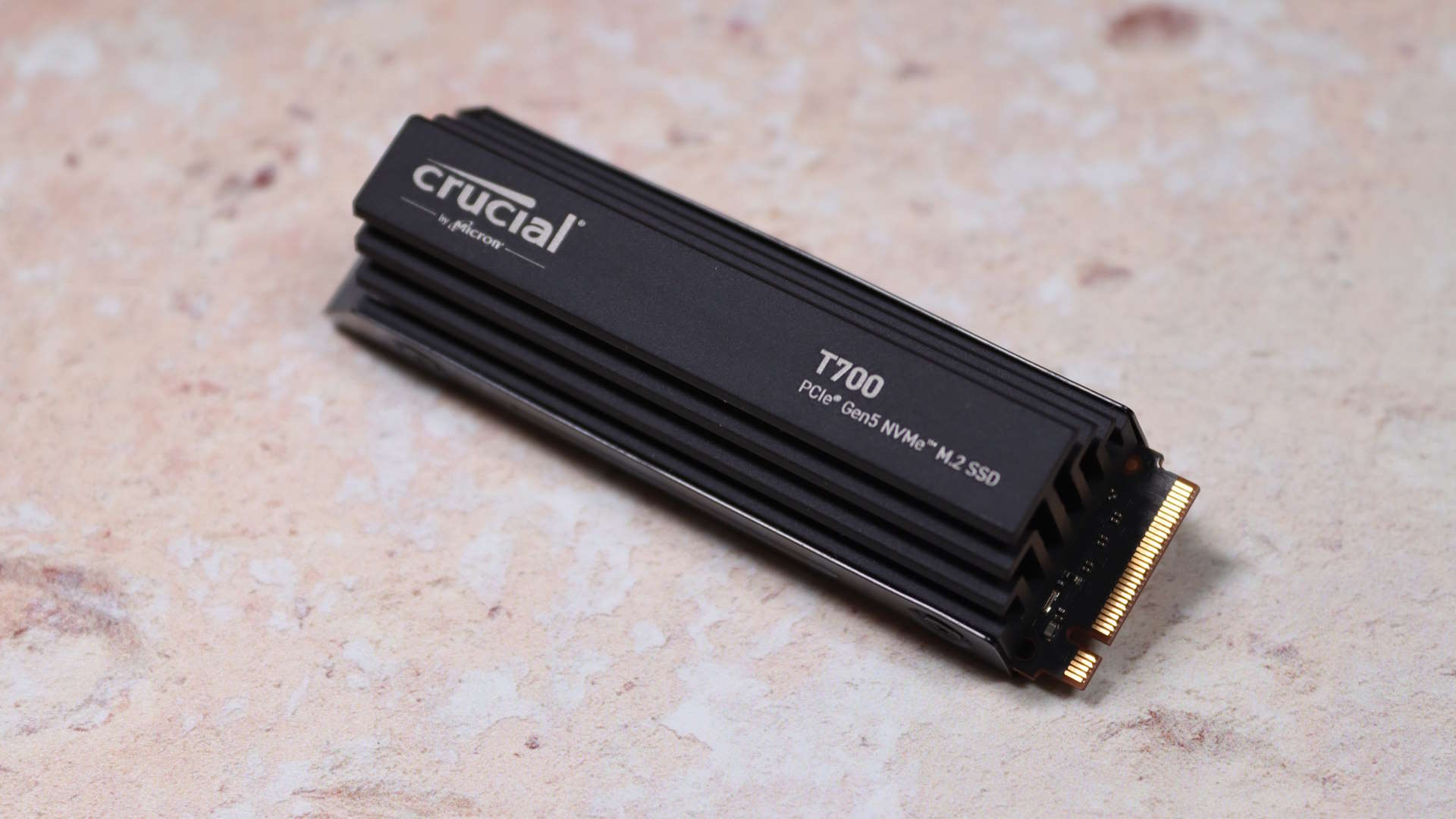
I have the future in my hands. Well, in the PC Gamer test rig anyways. Yes, the lightning speed promise of PCIe 5.0 SSDs is fulfilled by a Crucial T700 drive that finally uses the 'good NAND,' with performance two-thirds quicker than any previous SSD we've tested. And that's just from an engineering sample which isn't yet fully validated or optimised.
So, it could potentially go even quicker when release samples arrive.
Our PC platforms have been ready for the inevitable rise of PCIe 5.0 SSDs since AMD launched its AM5 motherboards and Zen 4 CPUs last year, and yet we've been waiting all that time to see any solid state drive manufacturer actually take advantage of it. There's been no SSD launched to utilise the extra theoretical bandwidth afforded by the new interface.
That's an effective doubling of the bandwidth provided by the PCIe 4.0 interface, and means that the potential performance of these new Gen5 SSDs in a traditional x4 M.2 socket goes from 8 GB/s up to 16GB/s.
So, why is it April 2023 and we're still yet to see a proper PCIe 5.0 SSD released? It's all about the memory and that so-called 'good NAND'.
We've been chatting with manufacturers since PCs had PCIe 5.0 slots available and the noises were not that promising. The first drives that were announced, and indeed shown off in benchmarks, where the SSDs were capable of hitting 10,000 MB/s for read speeds. But that never looked like much of a performance bump over the ~8,000 MB/s Gen4 drives.
We were told it wasn't a controller issue—where the Phison PS5026-E26 is seemingly ubiquitous across announced Gen5 SSDs—and that it's all down to the availability of NAND flash memory capable of taking advantage of the bandwidth on offer.
The quickest flash memory available meant a limit of 10,000 MB/s.
Which is why we've been waiting on Micron to get its new 232-layer TLC NAND flash memory out the factory door and available for drive manufacturers to get into their own SSDs. The reason we've got a Crucial test drive is Micron is its parent company, and the T700 SSD represents a great vehicle for getting the performance of the group's new memory in front of consumers.
Which is also why you'll see a bunch of previews going live today as a whole bunch of these engineering samples have been doing the rounds.
Crucial T700 specifications
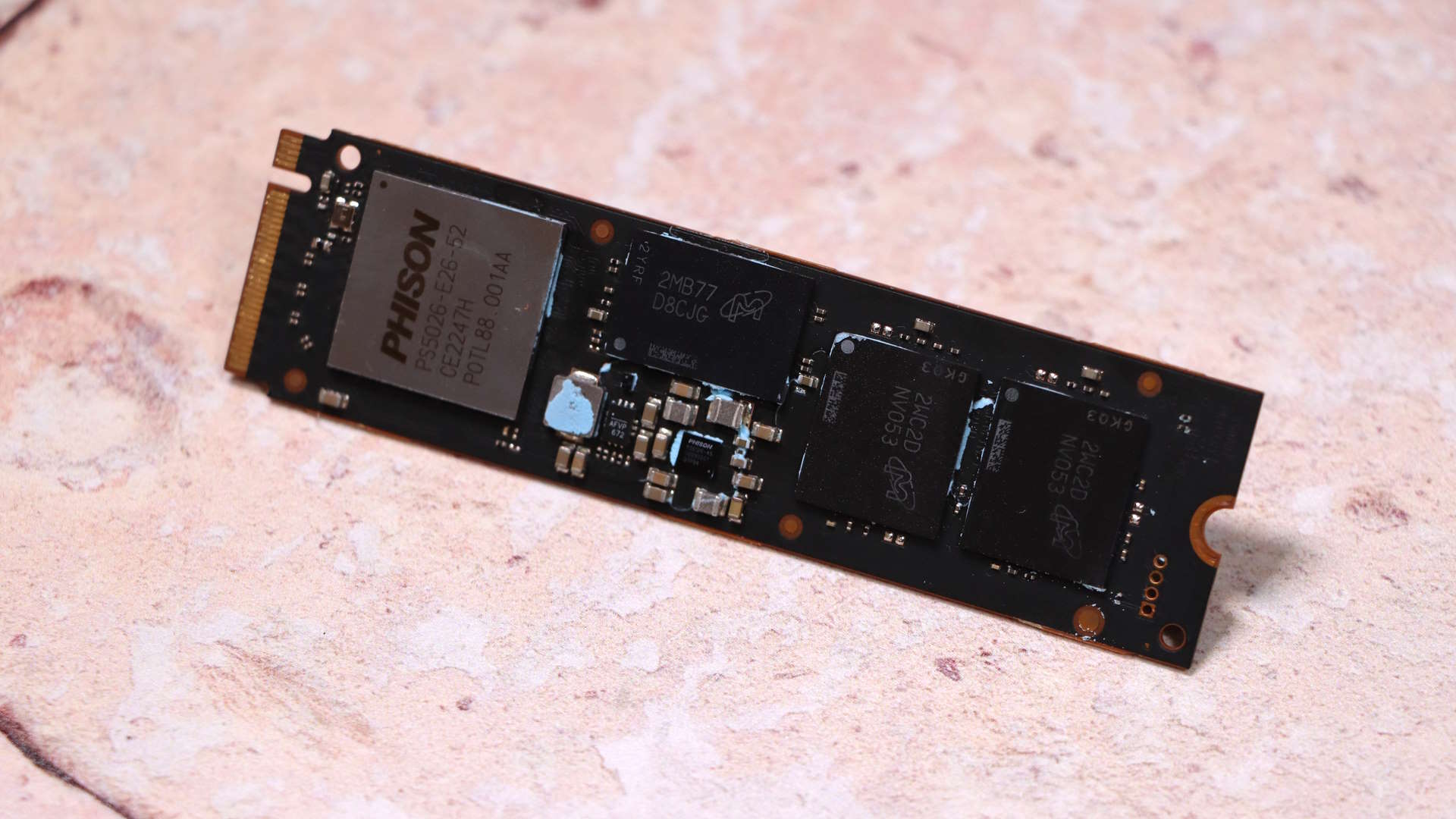
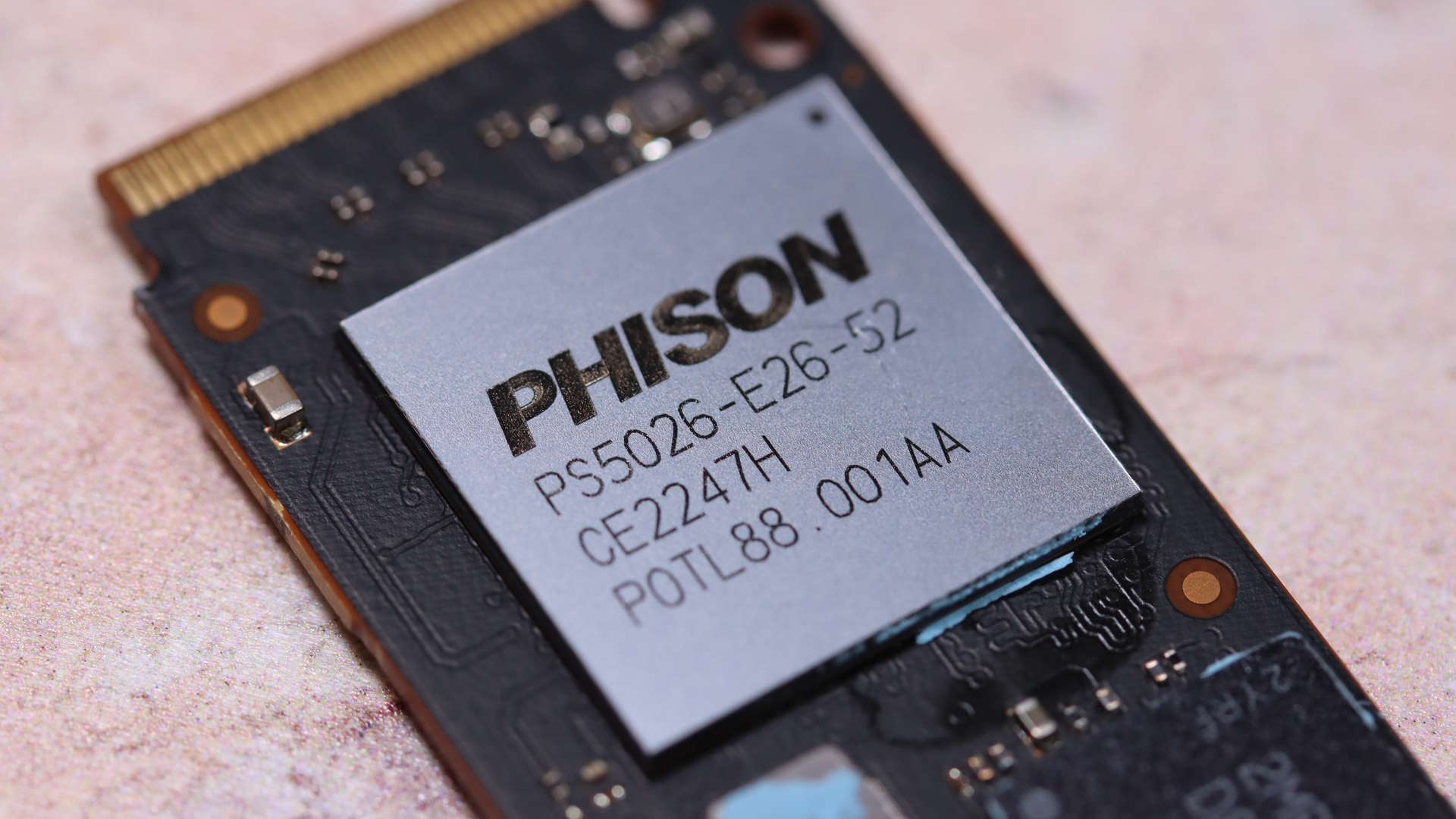
Interface: PCIe 5.0 | NVMe 2.0
Controller: Phison PS5026-E26
Memory: Micron 232-layer 3D TLC
Capacity: 2TB (also 1TB and 4TB available)
Seq reads: 12,400 MB/s
Seq writes: 11,800 MB/s
Endurance: 1,200 TBW
The Crucial T700 is rated for up to 12,400 MB/s sequential reads and 11,800 MB/s writes for the 2TB version that we've got our hands on. The 1TB version is actually fairly significantly slower, offering 11,700 MB/s and 9,500 MB/s for respective sequential reads and writes.
The drive is supplied, as previously mentioned, with Micron's new 232-layer 3D TLC NAND flash memory, which is that 'good NAND' everyone's been waiting on. Theoretically, on this controller, it could be tuned to even 14,000 MB/s.
The T700 is going to hit retail likely in May time, though we don't have a retail price for the unit as yet. But given the fact that the few PCIe 5.0 drives that have appeared in retail at the slower speeds, and have costed twice that of an equivalent high-end PCIe 4.0 SSD, the Crucial T700 is not going to be a cheap drive.
It comes in two flavours—1TB, 2TB, and 4TB capacities notwithstanding—one that comes with a chonky metal heatsink and another that comes with just a thin copper label. It's long been known that PCIe 5.0 SSDs would come in hot, and initially I was pleased to see the T700 arrive not sporting a tiny whiny fan.
But it does need a heatsink, so that bare version is only designed for users that are going to seal it under a motherboard's own heatsink instead. Our test ASRock X670E Taichi board even has its own be-fanned extra Gen5-specific heatsink.
Crucial T700 performance
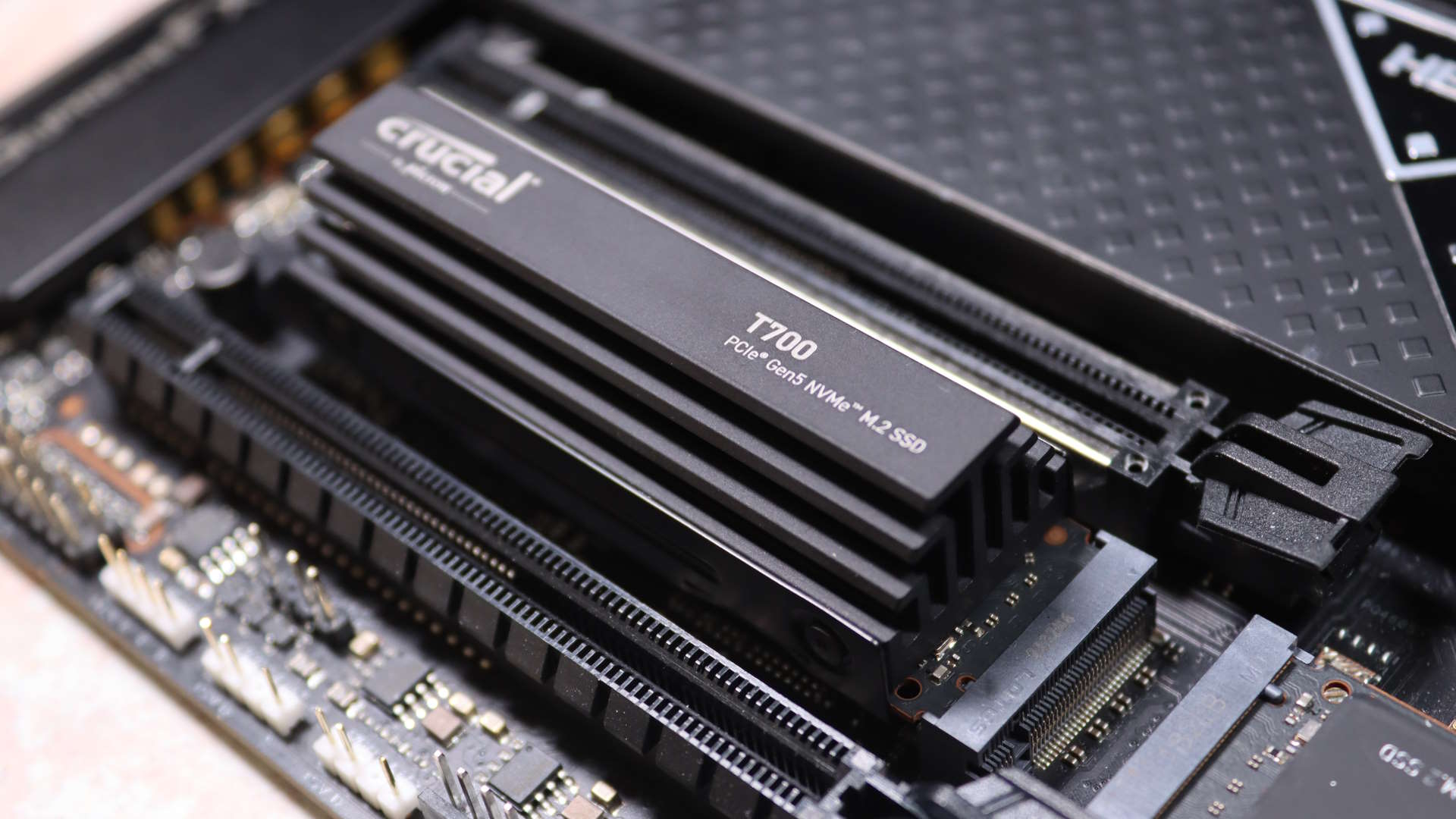
The good news is that in our preview testing the Crucial T700 does indeed hit its rated sequential performance. On the money, in fact, with our own numbers taken from the standard CrystalDiskMark benchmark being around 30-40 MB/s quicker.
That's some 67% higher than the fastest Gen4 drive we've tested, the Samsung 990 Pro in 2TB trim. We've run our benchmarks against historic data from some of the best PCIe 4.0 SSDs on the market today, and the numbers are fascinating.
That peak sequential read/write performance means the T700 is an outstanding drive if you're flinging large files and folders around your PC. In our real-world file transfer test—basically the act of copying a medium-sized Steam game folder—it's supremely quick. It took just 40 seconds to copy a 30GB folder from one part of the drive to another.
The best PCIe 4.0 drives we've found take around 100 seconds longer. At best.
The issue with that peak performance, however, is that it's purely within the interface. You're not going to get that performance copying into or out of a PCIe 5.0 SSD when you're crossing over to either a PCIe 4.0 drive or an external USB-based SSD.
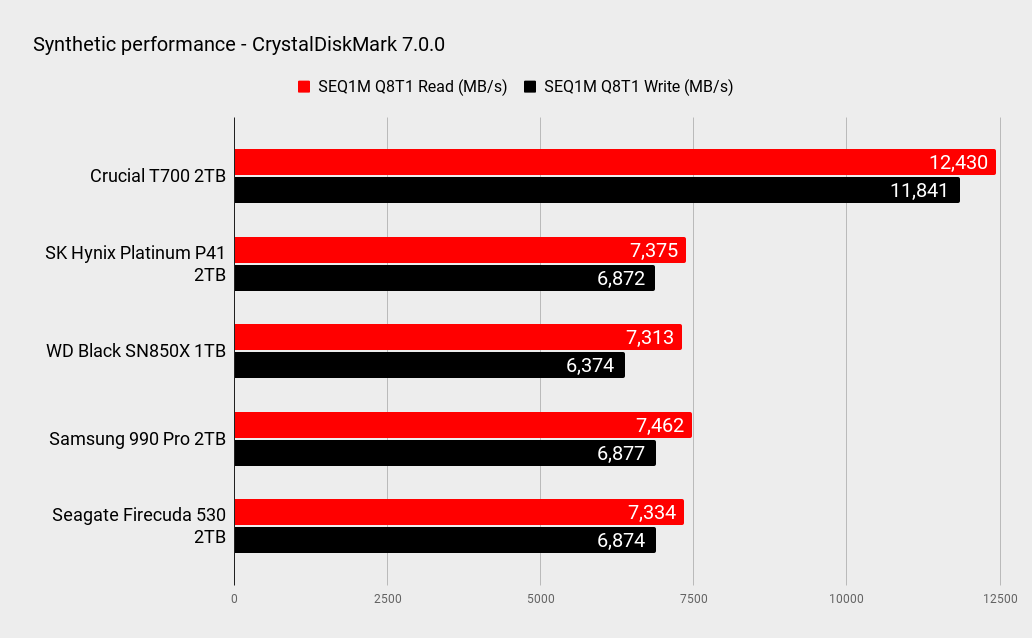
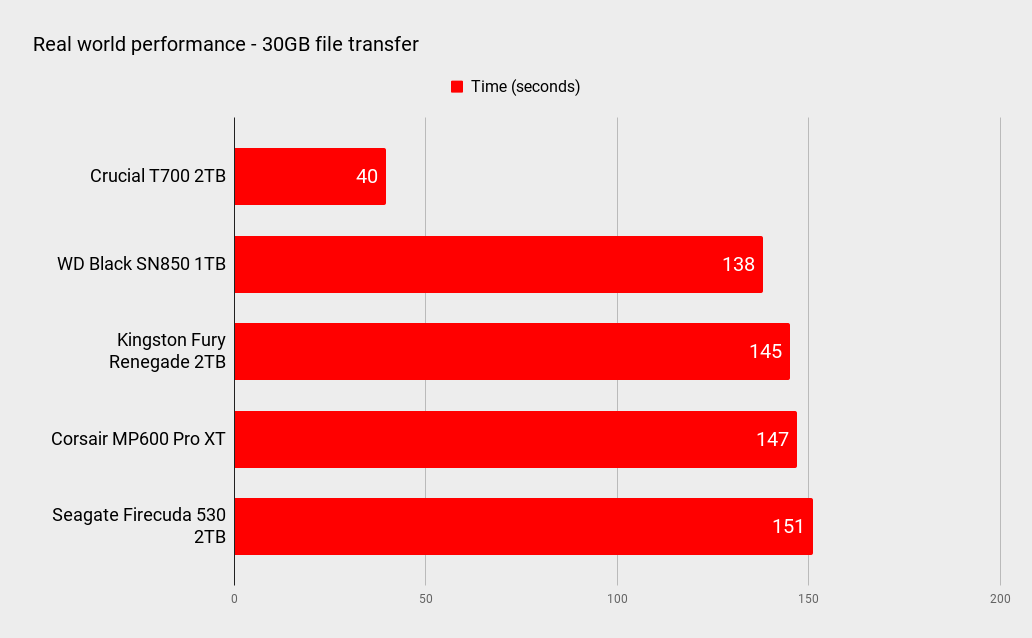
So, those sequential numbers are almost just about benchmark-based silicon waving. What you really want for a seriously slick experience is the random 4k performance of a Gen5 to see just as much of a performance boost over Gen4. And you simply don't.
The random 4k performance is all about how well a drive is at shunting around all those miniscule read/write operations that make up the busywork of any modern operating system. Honestly, this is the point that's most disappointing about the new PCIe 5.0 drives, and not just this Crucial T700.
While the performance is still great in reference to the majority of PCIe 4.0 SSDs, it's by no means leagues ahead. In fact, while we've not seen any Gen4 drives that will offer as high read and write performance together, individual drives have delivered faster reads or faster writes in isolation.
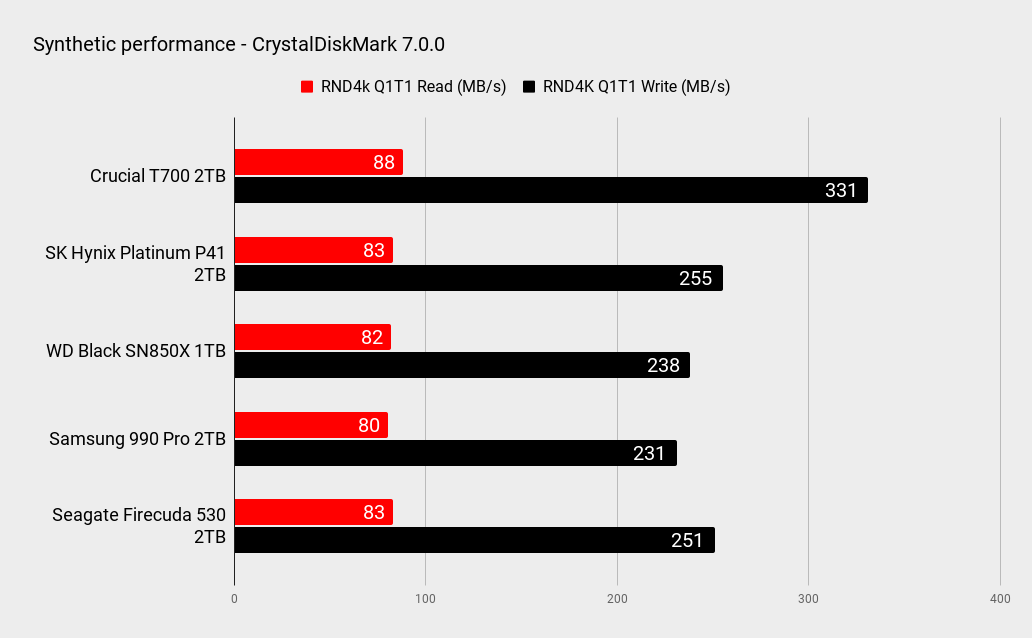
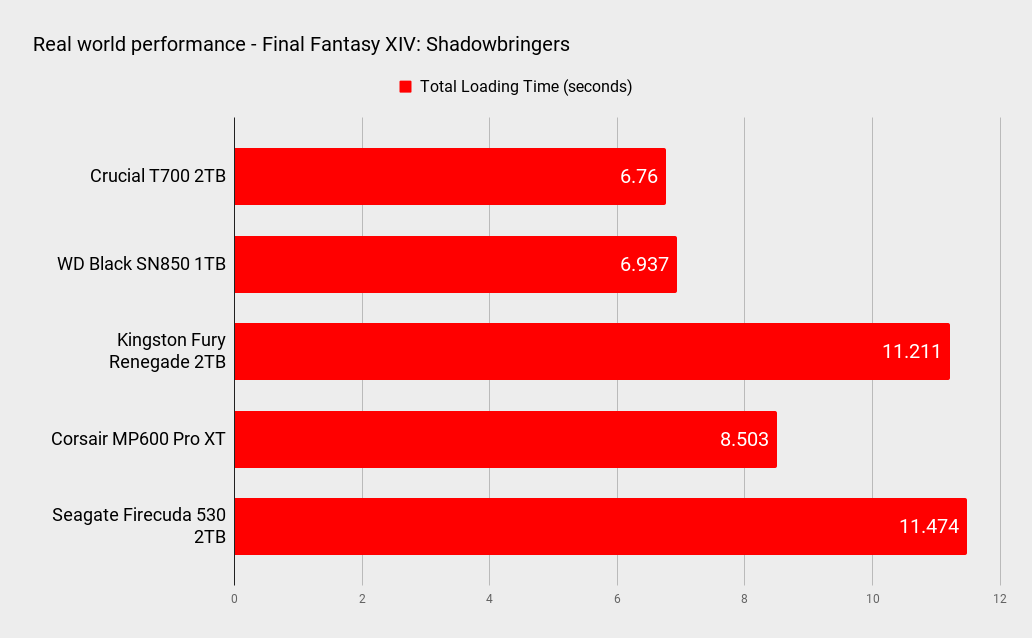
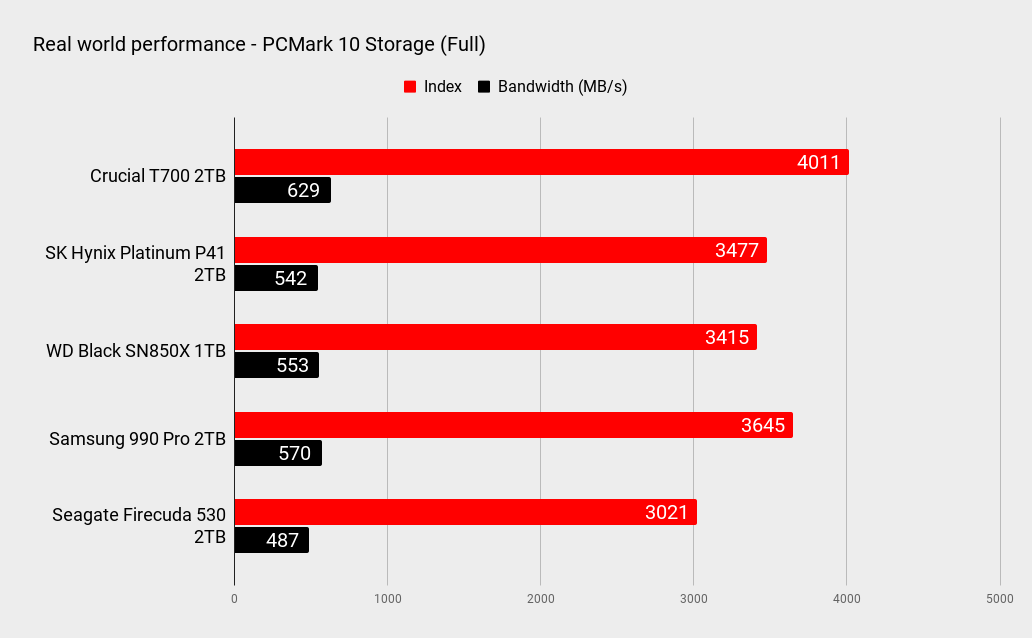
Basically, you're not getting the same sort of unprecedented performance that you'll see from the sequential numbers. And it's this that keeps the actual game load performance looking rather unimpressive, too.
We've been using the Final Fantasy XIV Shadowbringers benchmark to test game load times and even though the times are low, we've seen Gen4 drives getting very, very close to the same numbers.
But what about heat? Oh yeah, she gets toasty. The Crucial T700 is the fastest, but it's also the hottest drive I've ever had in my test rig. With peak operating temperatures of up to 82°C it's fully 10°C hotter than the nearest hot drive. And that's an SSD that comes without a heatsink slapped on top of it.
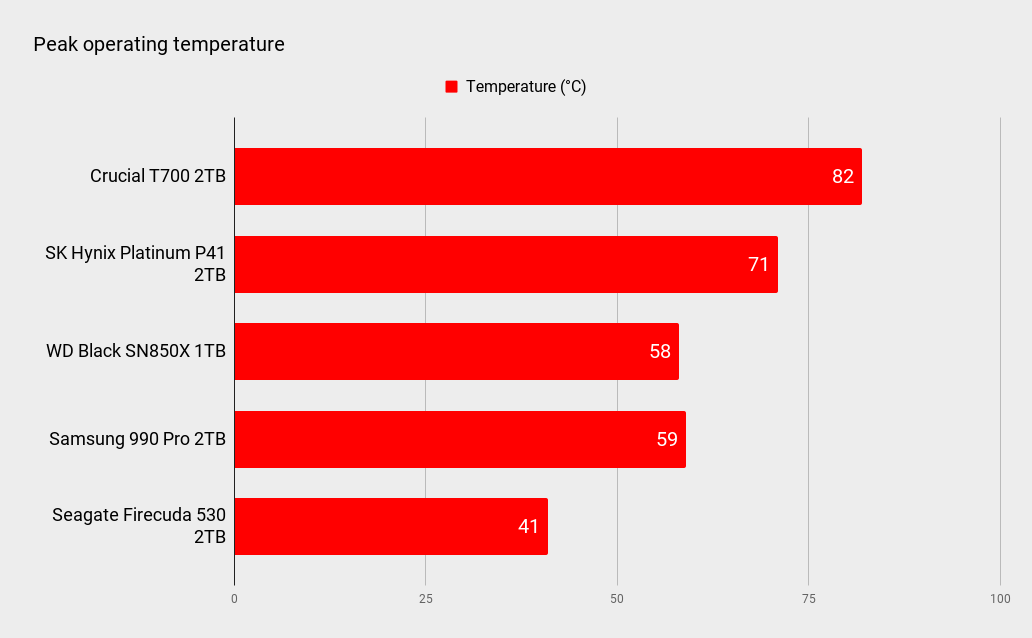
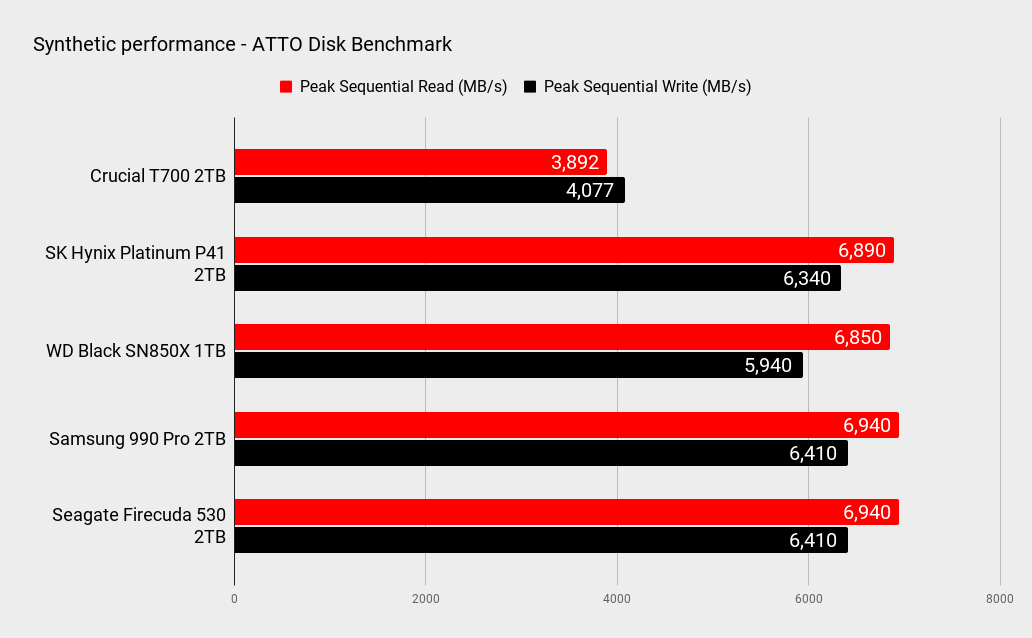
Motherboard: ASRock Taichi X670E
CPU: AMD Ryzen 9 7950X
Cooler: Corsair H100i RGB
Memory: G.Skill Trident Z5 Neo DDR5-6000
PSU: Seasonic Prime TX 1600W
Chassis: DimasTech Mini V2
Monitor: Dough Spectrum ES07D03
Such a peak thermal experience wouldn't be an issue if it weren't for the fact that it does impact performance. I ran our CrystalDiskMark synthetic sequential read/write tests for five consecutive runs, allowing only 30 seconds down time in between, and the performance dropped off markedly.
The read performance held up pretty well up to the final run, to be fair, though the write speeds dropped off a cliff with subsequent benchmark runs as the temperature increased. After just five runs of CrystalDiskMark the temperature of the heatsinked drive hit 79°C and the read/write performance collapsed to around 5,200 MB/s and 5,700 MB/s respectively, less than half the rated numbers.
A further issue is that the heatsink doesn't provide enough passive cooling to be able to return the drive's temperature to a peak performance level in anything like an expedient manner. It must be noted then that you'll need excellent case throughflow to be able to shift the heat away effectively because on our open test bench there simply wasn't enough movement to facilitate it.
That's why you'll see a whole bunch of PCIe 5.0 SSDs rocking fans, whether you like it or not.
Crucial T700 analysis
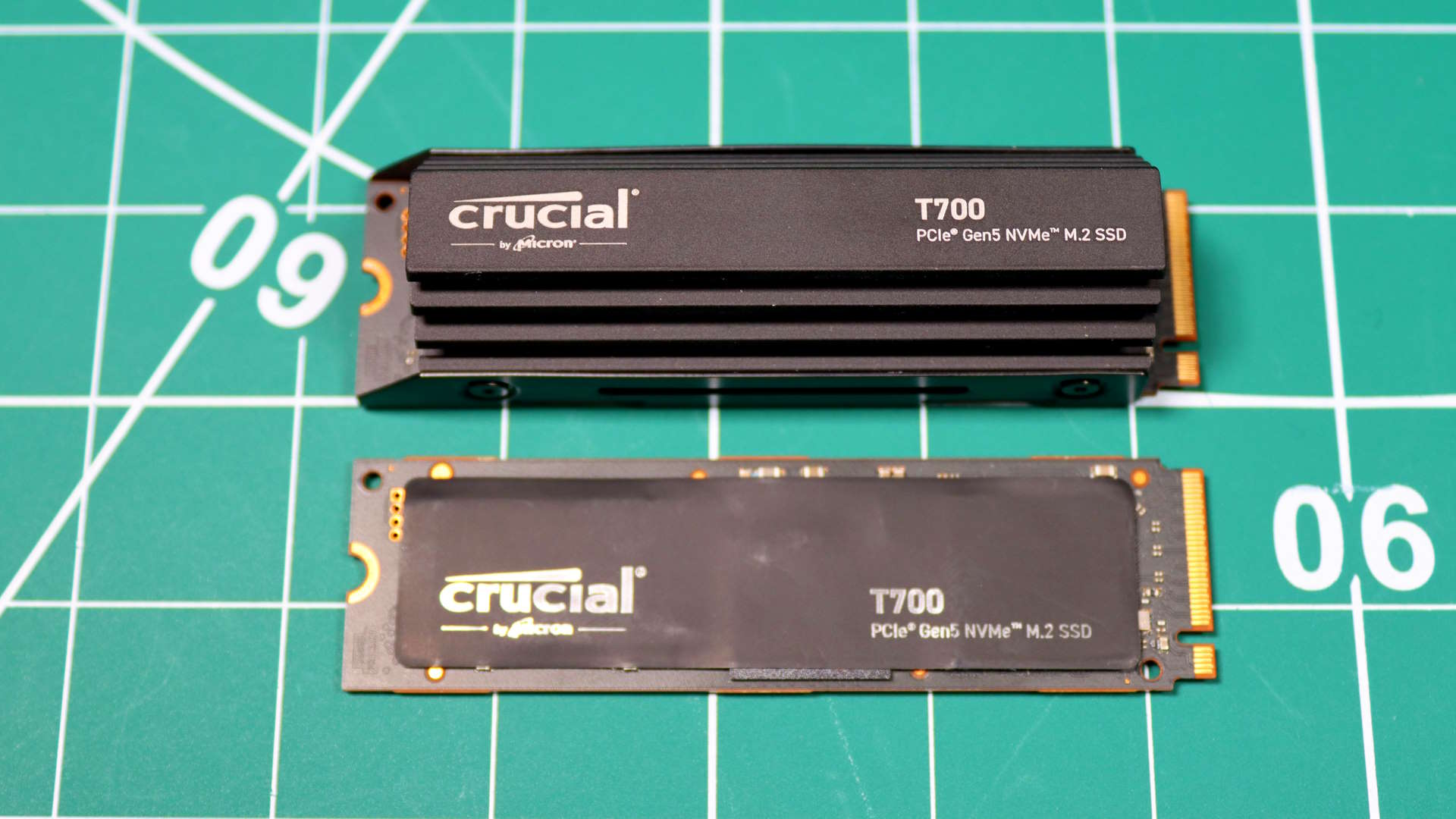
It feels as though SSDs are getting into the same territory as system memory or processors when it comes to the real-world relevance of their peak performance benchmarks. Because, yes, the sequential preview numbers we've pulled from the Crucial T700 are seriously quick—faster than any other drive we've ever tested or seen tested out in the wild.
But those headline performance figures bear little or no relation to the actual day-to-day experience of having your operating system running from a super-quick PCIe 5.0 SSD.
Your OS isn't going to feel any more slick than a Gen4 drive that costs half as much, and your game load times aren't going to change as much as you and your wallet might want them to.
The caveat here is obviously that we're talking about preview numbers on an engineering sample SSD that hasn't been fully optimised. And Crucial has stated that random 4k performance isn't final, most especially when run as your OS drive. But I wouldn't expect the 4k speeds to change to any tangible degree even when final review units arrive in our labs.
The potential large grey mammal in the room, however, is DirectStorage. Yes, that wonder feature which promises to do great things for games attached to an NVMe SSD. And it kinda does, in the one DirectStorage game, Forspoken. The benchmark load times are indeed seriously quick for an NVMe SSD, much faster than a SATA SSD.
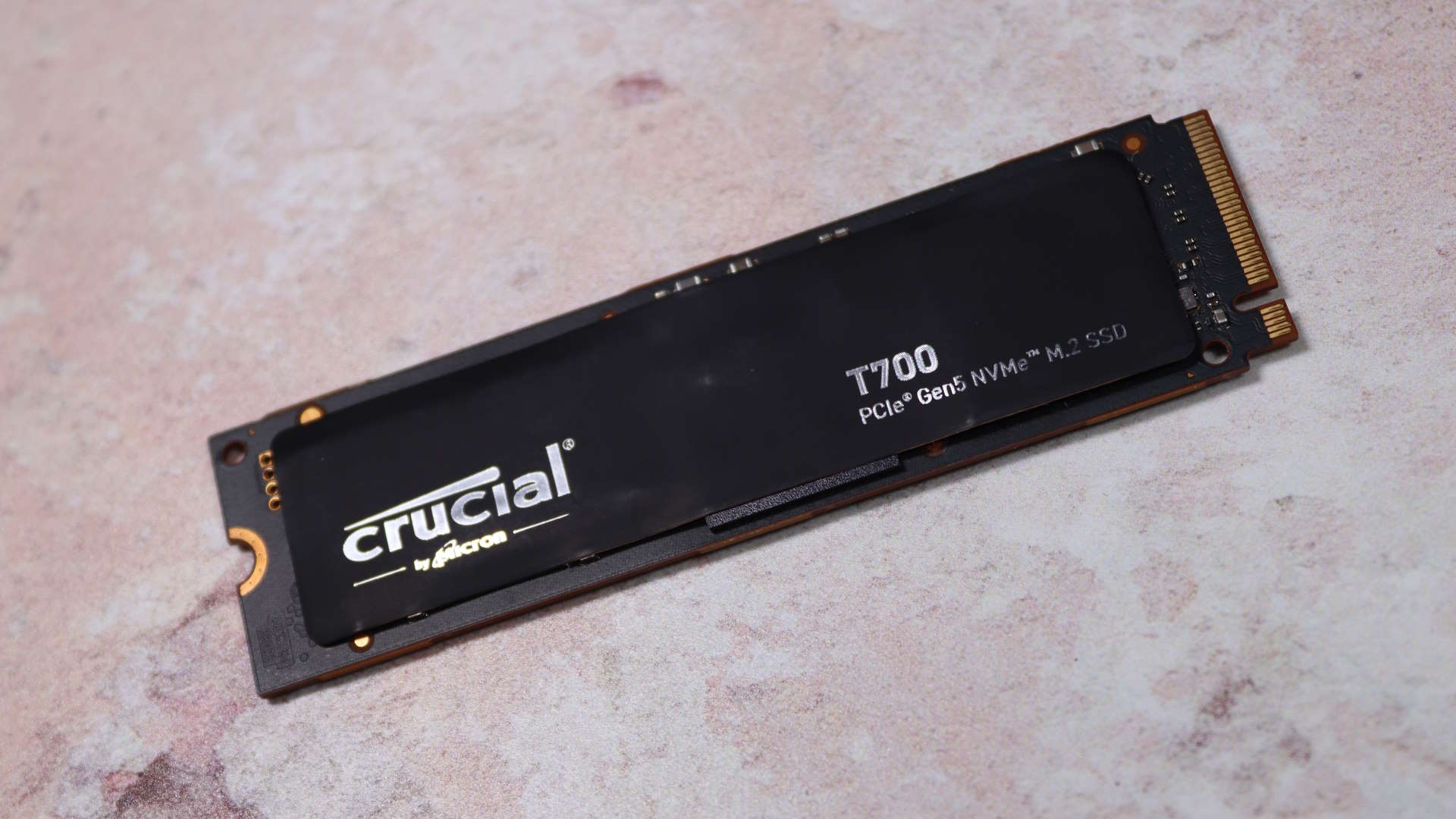
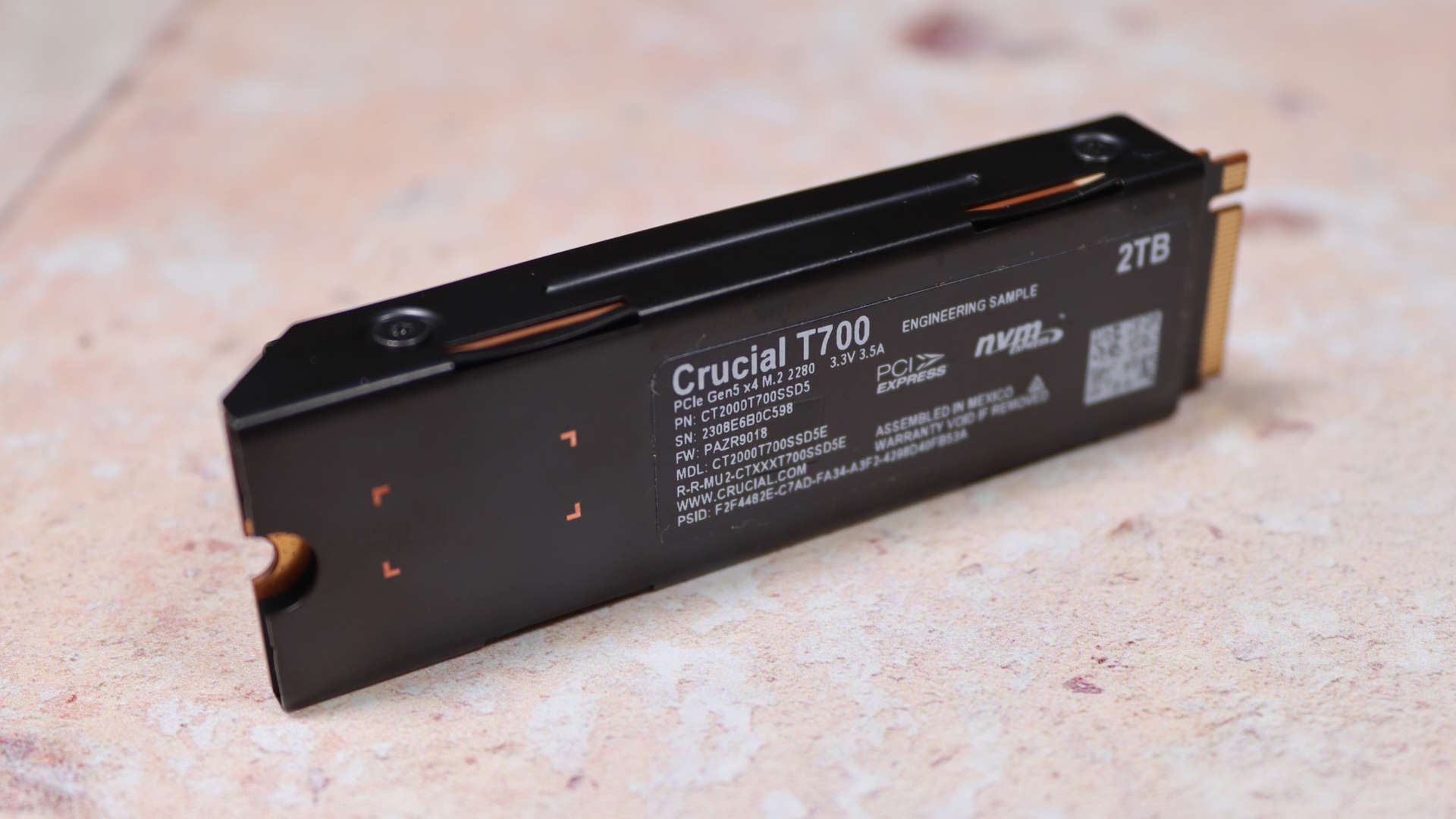

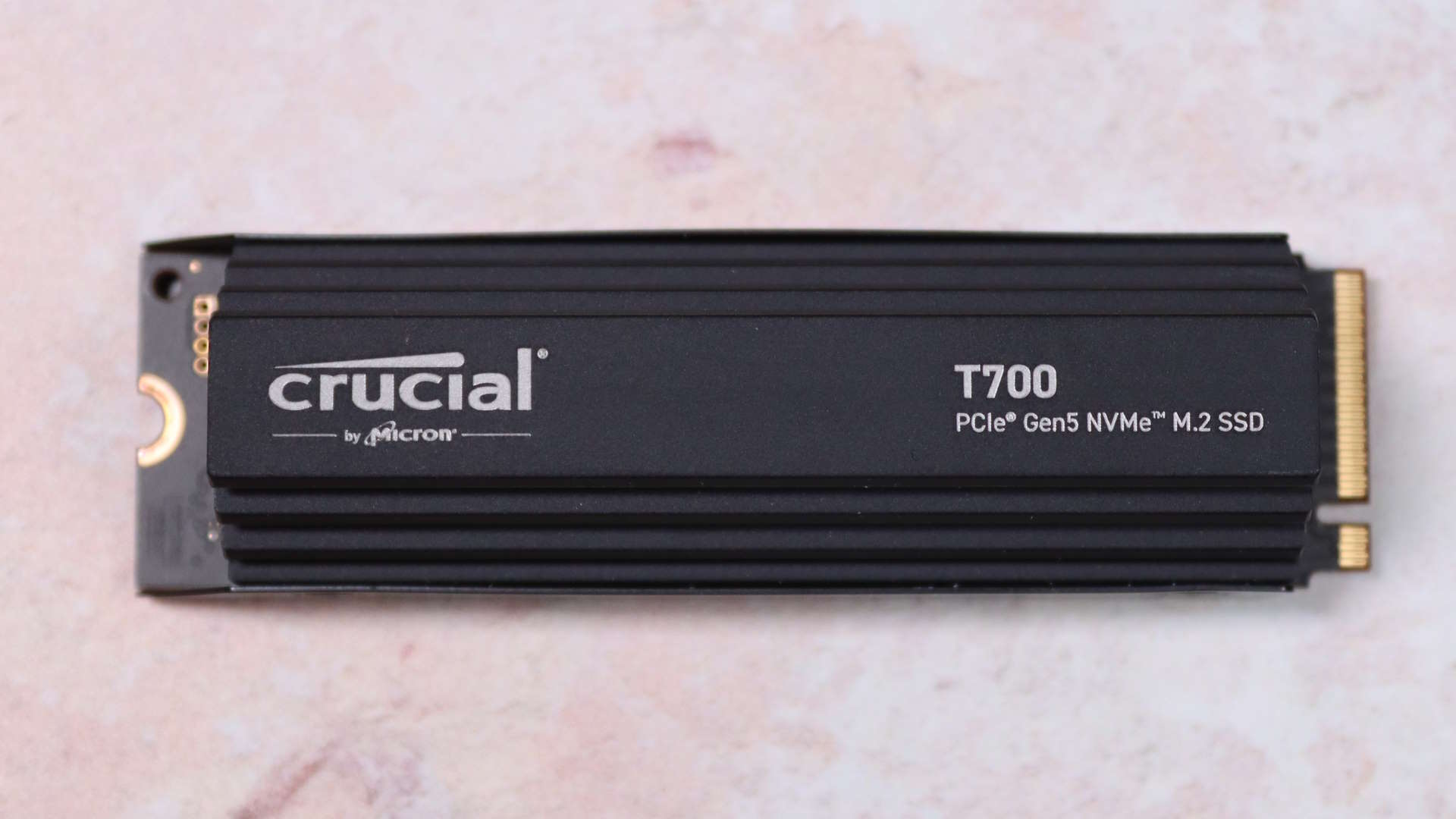
But notably there is practically no difference between a PCIe 4.0 and PCIe 3.0 SSD, despite the doubling in effective bandwidth. The use of the NVMe protocol is the key driver of performance, not the actual speed of the interface a drive is attached to.
So, while Crucial was at pains to talk up the potential boon to gamers that DirectStorage represents when I spoke with its representatives, again it's unlikely that a speedy PCIe 5.0 drive will feel materially different from a quick PCIe 4.0 SSD.
Or maybe Forspoken just isn't that good a test.
For gamers, then, rushing out to get on the PCIe 5.0 hype-train feels almost entirely unnecessary given what we've seen so far. Maybe that will change in the future, but for now it isn't going to deliver the performance uplift the inevitably high price premium on the new technology should demand.
For content creators, however, a fast Gen5 SSD could make a worthwhile upgrade to your existing PC, though certainly not a reason for upgrading to a new platform by itself. There is also the fact that most motherboards, even high-end creator ones, will only have a solitary PCIe 5.0 SSD slot, so you're still only going to see the bandwidth benefits when shifting large files around the same drive.
And when you are regularly messing around with large files, the thermal throttling may well pop up to make itself known, making the benefits potentially fleeting.
Some of my issues with the Crucial T700, what is undoubtedly the fastest SSD I've ever tested, could be mitigated by performance optimisations prior to the final launch. But it feels like the problems are with the technology as a whole and not with Crucial's implementation. And that's going to be far harder to fix.







